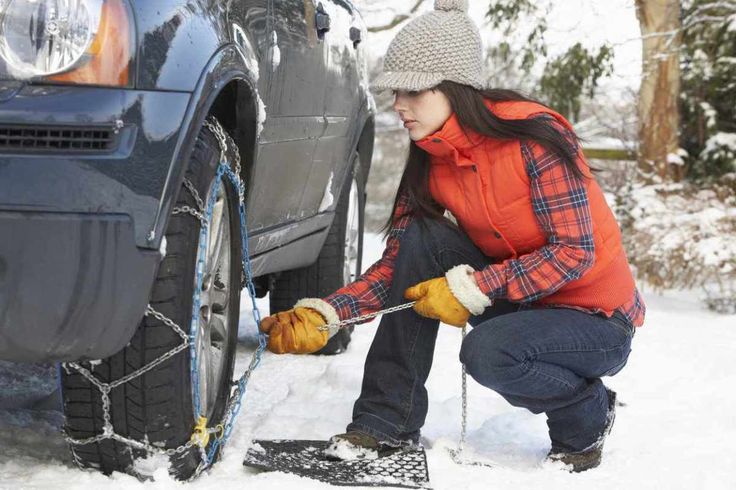There are ongoing arguments about the relative benefits of winter tires; suffice to say that I’m in the pro-winter camp. I believe that winter tires offer superior cold temperature grip compared to all-season or even all-weather tires, even on dry pavement. Since it seems that you can’t so much as touch two cars together without causing more than $1,500 damage, I look at winter tires as a good investment. If they stop 10 feet shorter just once, they’ll have paid for themselves. Plus, you’re splitting your wear between two sets of tires since your warm-weather rubbers get a four month vacation.
Winter tires should be mounted on a dedicated set of wheels, whether its relatively inexpensive steel or fancy alloy rims. Besides the cost of mounting/dismounting your tires twice per year, each on/off cycle risks damaging the tires or even the wheels. There’s at least a $60 difference in cost at my shop between swapping unmounted tires and exchanging mounted tires, so it only takes a couple of seasonal changes to effectively pay for the wheels.
If you’re among the growing group of people to have winter tires on a dedicated set of wheels, there’s a good chance that you’re still paying someone to do those seasonal changeovers for you. Really though, if you’re comfortable changing a flat tire, you’ve got the skills to do the winter changeover yourself.
While you can get away with using the tire changing tools that came with your car, it’s both easier and far safer to pick up the proper gear - which can be useful for other DIY jobs.
Ideally, you’ll want a service jack, safety stands, lug wrench and/or sockets, a breaker bar, and a compressor to inflate the tires.
Now is a good time to check the tire pressures. Tires that have lost more than 10-15 psi during storage should be inspected for leaks.
One option for winter wheels, as seen with two of these three sets, is to use the factory alloy wheels for the winter rubbers. Winter tires for the original 15-inch wheels on my wife’s Nissan Maxima were relatively inexpensive.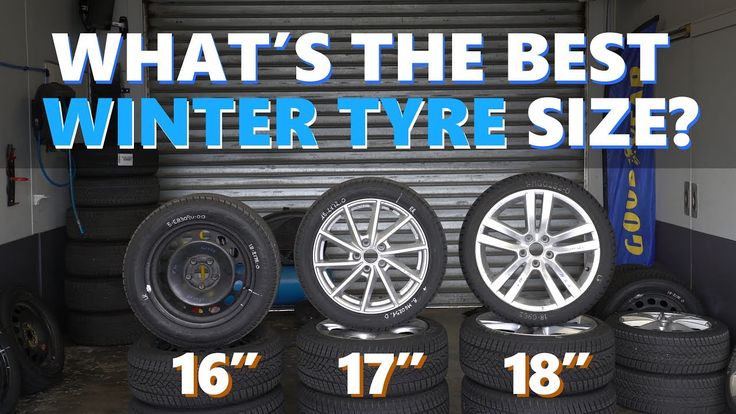 I bought more stylish 17-inch wheels and tires to use the rest of the year.
I bought more stylish 17-inch wheels and tires to use the rest of the year.
RELATED: Top 10 winter tires for 2016
Secure the area
Once in position and turned off, the car should be placed in gear (manual) or Park (automatic), and the parking brake firmly set. Ideally, wheel chocks or blocks should be placed on either side of the tire at the diagonal opposite side of the wheel that’s being changed.
With this car, I bought 16-inch steel wheels to spare the car’s original 17-inch alloy wheels from salt exposure and corrosion, while reducing the cost of the winter tires themselves.
Loosen the nuts
Even if you have air tools, it may be necessary to crack the wheel nuts free while the tire is still on the ground and has resistance to turning. If you’re using hand tools, this step is required. A quarter- to half-turn is plenty; we only want to loosen them enough to ease their removal once we’ve lifted the tire off the ground.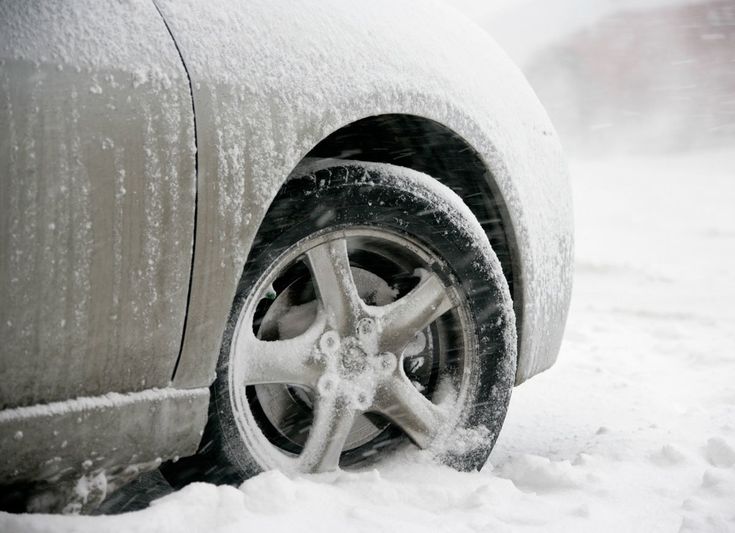
Take extra care with the locking wheel nut, if present. It is distressingly easy to strip or break the keyed portion of these sockets if they’re not perfectly aligned or sitting the entire way on.
Remove the wheel
Now that we’ve lifted the wheel off the ground, we can readily remove the wheel nuts. After you’ve removed the wheel, write down where it was mounted. I like to mark the tire’s position on the inside sidewall with a tire crayon (available from Canadian Tire or most auto parts stores). Chalk will work in a pinch, but may rub off. To eliminate any potential confusion, I use “D” and “P” for driver and passenger sides, and “F” or “B” for front or back.
Inspect the brakes
With the wheels off, take a moment to check out your brakes.
It’s a bit messy, but spraying a lubricant or rust inhibitor like Honey Goo or Krown T40 on the axle nut and centre flange keeps them from corroding – a greater concern with steel wheels, as they’re exposed to the elements.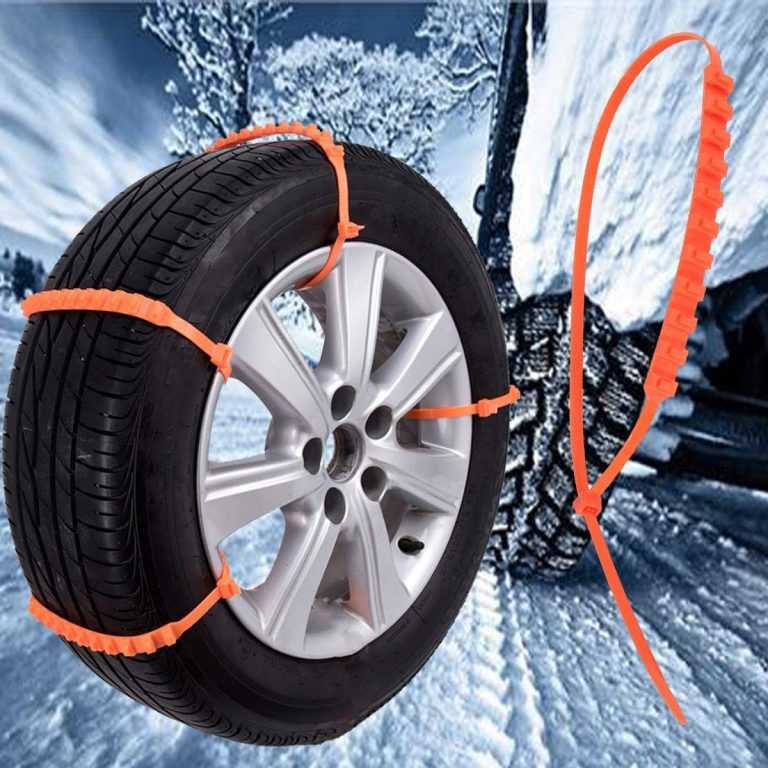 Any dirt or corrosion on the flange itself should be removed. Do not lubricate or put anti-seize on the threads of the wheel studs.
Any dirt or corrosion on the flange itself should be removed. Do not lubricate or put anti-seize on the threads of the wheel studs.
Replace the wheel
When putting the wheels back on, always start tightening the nuts by hand. If aftermarket wheels with oversized centre holes are used, all wheel nuts should be run in sufficiently to centre the wheel before their final tightening.
Whether air or hand tools are used to install the wheel nuts, it’s recommended that a torque wrench be used to ensure that they are tightened to the correct value (it’s normally listed in the owner’s manual). Nuts should always be tightened in the appropriate cross-sequence.
By: Brian Early Special to the Star
SHARE:
REPORT AN ERROR
JOURNALISTIC STANDARDS
ABOUT WHEELS.CA
When the warm summer air gives way to the chill of an impending winter, some of you are probably thinking more about fading tans and lost beach days than you are about car care. We understand that anything related to cold weather might be a sore subject. However, snow tires (also known as “winter tires”) are tremendously important for your safety if you live in a snowy climate, and it’s important to know when to switch over to them.
We understand that anything related to cold weather might be a sore subject. However, snow tires (also known as “winter tires”) are tremendously important for your safety if you live in a snowy climate, and it’s important to know when to switch over to them.
Winter tires, marked with a snowflake symbol, are made with special low temperature resiliant rubber compounds and have deep treads that grip unplowed snow, ice and other inclement conditions under your wheels. All-season tires, regardless of being branded with M+S for Mud and Snow, might not be suitable in heavy snow.
Robert Abram, product planning manager at Yokohama Tire Corporation describes the difference: “The compounding and tread designs for winter tires are altered from traditional all-season tires to maximize grip. Even the best all-season tires have compounds that get more brittle as the temperature drops, and when that happens, the tires tend to grip less. The winter tire compound remains pliable when temperatures are low, retaining grip.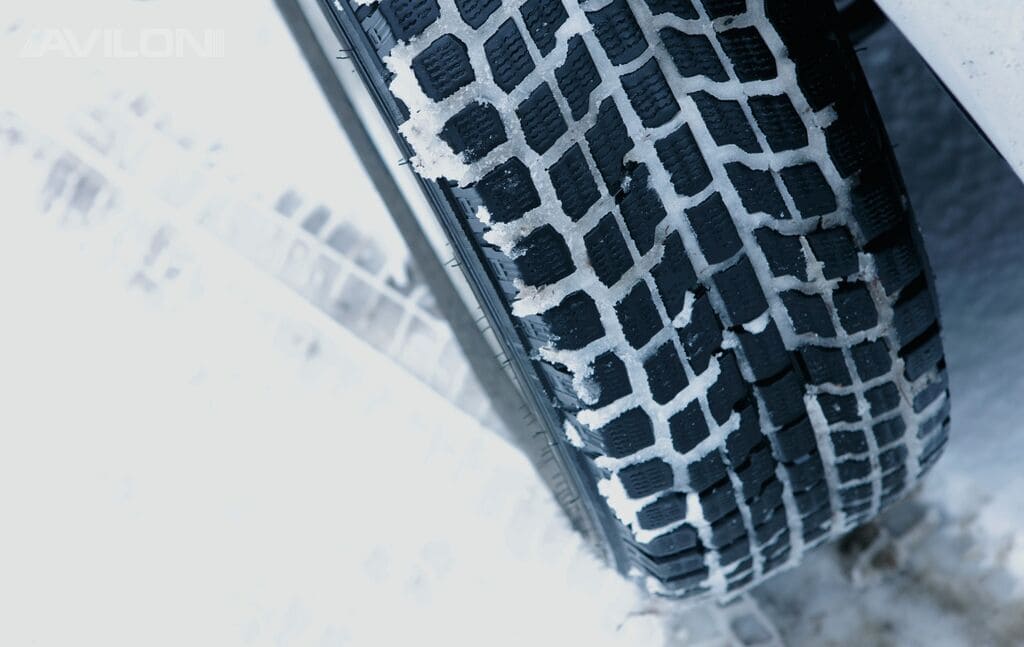 ”
”
Without grip, most of your car’s safety functions–like all-wheel drive and anti-lock brakes–can’t do their jobs correctly.
Doug Brown, brand category manager for BFGoodrich Tires, agrees. “Having a second set of dedicated snow tires gives you a margin of safety and a sense of security to get where you’re going,” he says. “You will increase your ability to start on a hill, stop the vehicle and to maneuver in deep snow that can’t be achieved with conventional tires.”
Winter tires also come in studded form. Adding 100 little studs to your tires makes for a safer ride on ice; however, the use of studded tires isn’t always allowed due to the damage they cause on clear roads.
Even if you have two-wheel drive, you should put snow tires on every wheel of your vehicle. Putting them only on the front wheels of a front-wheel drive car can cause spinouts or result in diminished steering capabilities in a rear-wheel drive car. Trust us, it’s worth the extra dough to do all four wheels at once.
There are no clear answers as to when you should put on your winter tires, mainly because every area is hit by weather at different times and different severities. Aim for changing them when the weather worsens, but don’t wait too long. The earlier you get them changed, the less waiting at the shop you’ll have to do. Better to have them on too soon than leave it until you wake up to a few feet of snow on the ground and your car stuck for the day.
While you can technically leave winter tires on your wheels year-round, we recommend against it.
“One of the real downsides to keeping your winter tires on in the summer is that they wear out very quickly,” Abram says. “In most conditions, you can usually get three or four seasons out of them before you have to replace the winter set when you’re swapping them out with an all-season or summer tire. If you drive them year-round, the heat will wear away the specific winter tire compounds. You’ll also sacrifice some cornering and grip if you leave them on throughout the year.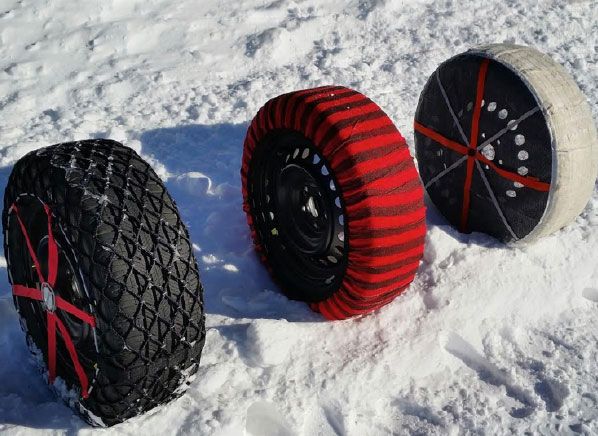 ”
”
When you buy winter tires, we suggest you put them on another set of rims. They don’t have to be new, or identical to the ones you already have, but they need to be the same size and have the same bolt pattern. Doing this will save you tons of time when you need to change them. Having a second set of wheels for the winter also means your nice, clean wheels will be protected during the rough weather months.
If you’ve got them on wheels already, the transition to winter tires is just like changing a tire; it’s a quick and inexpensive process. Considering that winter tires can save your life in severe winter weather, a little hassle twice a year seems largely insignificant. And if you put them on before the winter weather hits, you’ll ensure a safer winter season for you and your passengers.
This article originally appeared on DriverSide.
The annual replacement of winter tires, as a rule, follows a similar scenario - with the onset of frost, the first snow and ice, drivers take their winter tires from balconies or garages and head en masse to tire centers or simply nearest tire shop.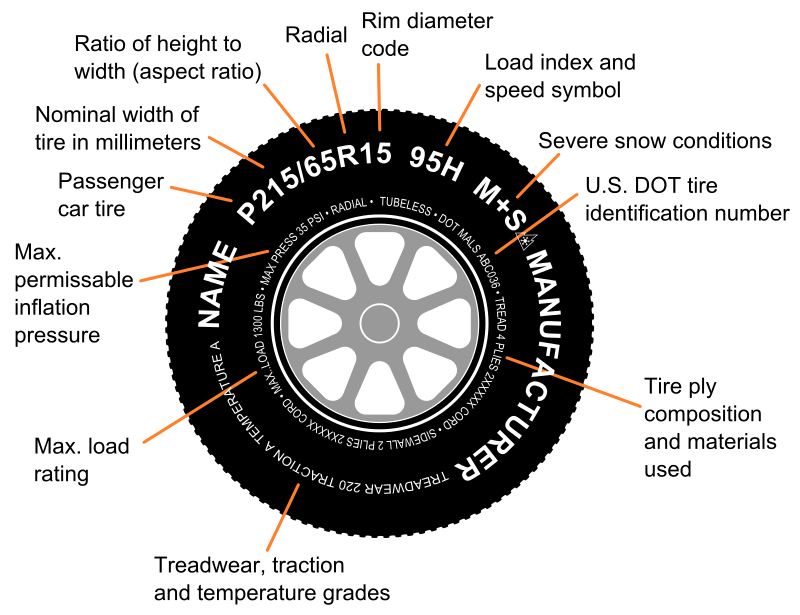
But will the work done in a nameless service be of high quality and safe? How to change summer tires for winter?
Winter tires Nokian Tires and the first snow
Here are some tips from Vianor's experts to make sure you've done everything you need to drive safely on winter roads!
Drivers who have lost control of their car in ice or snow conditions are frequent customers of car services. Both tire fitting and body shop. However, winter tires do not require changing them only when frost sets in. The design of winter tires is such that they begin to work effectively even at an average daily temperature of plus 7 degrees Celsius. And summer tires at this temperature already begin to work incorrectly: the rubber compound hardens and does not provide proper grip.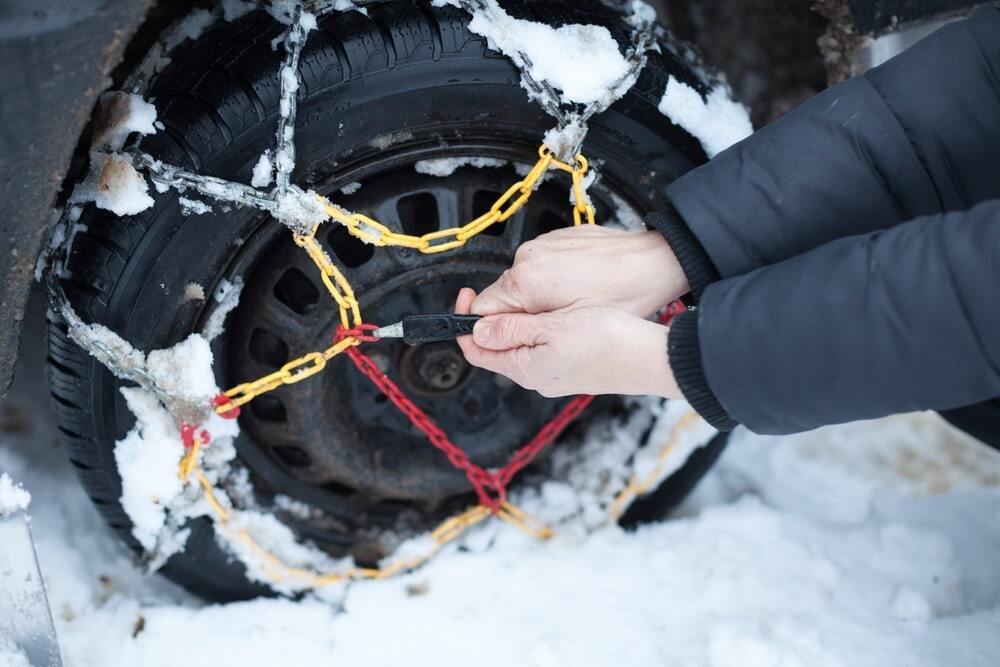
And don't be put off by the smiles of your neighbors or colleagues who put off changing tires until the last moment - they say, "it's too early." All this was described by the legendary Aesop in ancient Greece in his fable "The Beetle and the Ant", known to us from the translation of I.A. Krylov of her remake from Jean La Fontaine (in the Russian version - "Dragonfly and Ant"). “Summer red sang; I didn’t have time to look back, As winter rolls into my eyes.
It is better to make an appointment at the Vianor tire center in advance, and you will be received at the agreed time and without the need to waste precious time in line.
In Vianor tire centers, the technicians carefully check the condition of the winter tires brought by the customer before starting the replacement. In some cases, we recommend replacing tires with new ones. In some tire shops, unfortunately, they often put the tires brought by the client on the car almost without looking - just pay the money. It is not safe! After all, there is a whole set of signs that the tires have already exhausted their resource and can seriously let you down on the road - up to the complete destruction of the tire, followed by an accident and other sad consequences.
In some cases, we recommend replacing tires with new ones. In some tire shops, unfortunately, they often put the tires brought by the client on the car almost without looking - just pay the money. It is not safe! After all, there is a whole set of signs that the tires have already exhausted their resource and can seriously let you down on the road - up to the complete destruction of the tire, followed by an accident and other sad consequences.
The very first parameter of tire wear is the remaining tread height. According to Russian legislation, for winter tires it must be at least 4 mm. You can check this not only with a caliper, but also with a simple match, the height of the sulfuric head of which is 3-4 mm. When immersing a match between the tread lamellas, the sulfur head must be completely hidden from view.
Tire wear indicator Nokian Tires. If a snowflake is erased, it means that the tread height has decreased to 3 mm and such a tire can no longer be used in the winter either by law or from the point of view of common sense.
Most modern tires have built-in wear indicators. Nokian Tires, for example, have a DSI (Driving Safety Indicator) wear indicator on the central block of the tread, showing the value of the residual tread height of the tire in millimeters. The initial tread height of new Nokian Tires winter tires is on average 8-9 mm.
Tread height is not the only thing to consider. Damage such as splitting or cracking of the tread, bulges or other damage to the sidewall of the tire is a clear indication that it needs to be replaced. But if a self-tapping screw is suddenly found between the tread blocks, it can be easily repaired. The exception is run flat tires, most manufacturers of which exclude the possibility of repair.
Uneven tread wear should also attract your attention - when the shoulder area is worn much more than the central one and vice versa. In such a situation, variants with incorrect tire pressure or “left” wheel alignment angles are possible - wheel alignment may be required.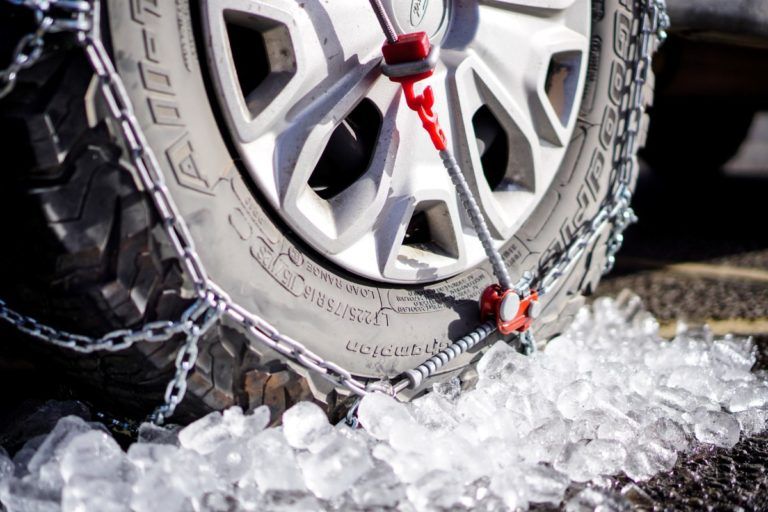
Nokian Tires experts, however, emphasize that a slight difference in the nature of tread wear is acceptable, because tires on a drive axle wear out more in the central part of the tread, while in freely rotating tires, the shoulder part. That is why the company recommends rearranging the wheels from one axle to another every 8 thousand kilometers. Another recommendation from Nokian Tires is that tires in the best condition (with the least wear) should always be mounted on the rear axle of the car and not on the front, even if your car is front-wheel drive. Finnish experts explain this by the fact that in an emergency it will help to avoid skidding of the rear axle associated with loss of traction, which is much more dangerous than skidding of the front axle.
On studded tires, pay attention to the number of loose studs. For example, according to the experts of the tire research and development center "Kama", the loss of more than 10% of anti-skid studs, especially in one tread area, will no longer allow the tire to demonstrate its original characteristics. The company recommends replacing such tires with new ones. Other manufacturers have similar recommendations.
For example, according to the experts of the tire research and development center "Kama", the loss of more than 10% of anti-skid studs, especially in one tread area, will no longer allow the tire to demonstrate its original characteristics. The company recommends replacing such tires with new ones. Other manufacturers have similar recommendations.
The tire fitting process looks simple, but it is only at first glance - there are a large number of nuances that only a professional can take into account. “By eye” it is not easy for an ordinary person to determine the performance of tire fitting equipment or the qualifications of a master. Therefore, we will show you how a regular winter tire change takes place at one of the Vianor tire centers.
Tire Center Vianor in Moscow at Varshavskoe Shosse, 150
First of all, the car is installed on a hydraulic lift using high rubber buffers to prevent damage to the elements of the bottom of the car. Using rolling jacks is, of course, much cheaper for the service, but unsafe and inconvenient.
Using rolling jacks is, of course, much cheaper for the service, but unsafe and inconvenient.
Craftsmen use pneumatic tools to unscrew the wheels, passing them to the washing area.
Tire washing. In the largest Vianor tire centers, one lift has its own individual car wash, tire changing and balancing machine, as well as a complete set of tools. This means that work can take place simultaneously at several posts.
Specialized automatic car washes, which use a special shampoo, allow you to clean the wheel from reagents and other contaminants - so the customer's summer tires will be clean and the wheels will be maximally prepared for tire fitting work. Even a small piece of adhering dirt or bitumen can adversely affect tire balance.
Removing summer tire
After washing, the wheels are dried with compressed air and transferred to the tire changer.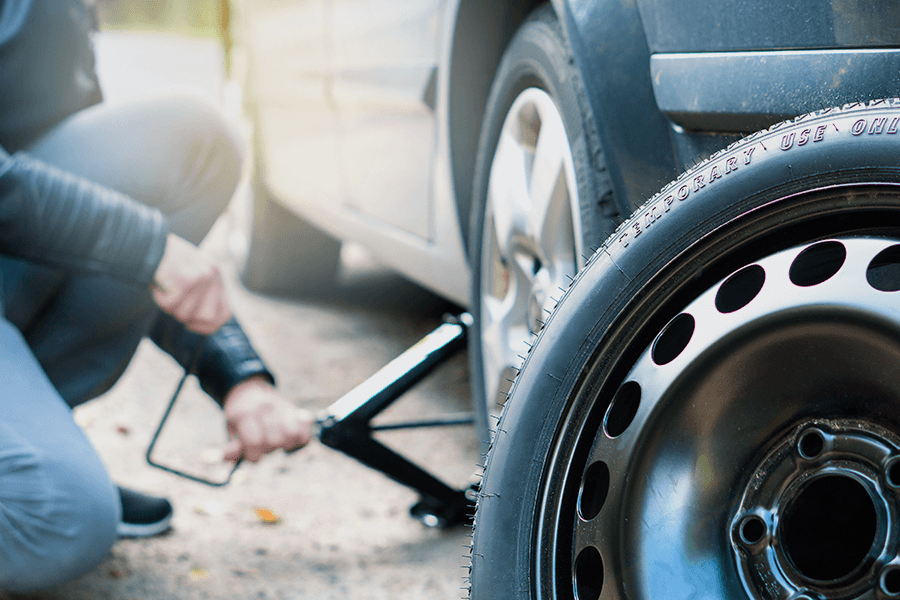 The wheel is carefully disassembled. The valve is changed to a new one - far from all tire shops do this, however, the poor condition of the valve is especially often the cause of a “sudden” loss of pressure in the tire.
The wheel is carefully disassembled. The valve is changed to a new one - far from all tire shops do this, however, the poor condition of the valve is especially often the cause of a “sudden” loss of pressure in the tire.
We recommend changing the valves every time you change tires - it's not expensive at all. By the way, valve replacement is sometimes included in the free tire fitting service, which we offer to customers during the promotion period, when purchasing a number of tire models.
The next step: a new tire is installed on the disk, taking into account the direction of its rotation, if the tire is directional.
Installing a winter tire on a wheel
The assembled wheel is then sent to the balancing machine. In the Vianor tire center on Varshavskoe Shosse, the most modern and efficient machines are precise and easy to use.
Modern balancing machines in the tire center Vianor
Depending on the design of the rim, as well as the existing imbalance, the master sets the weights of the required type and weight.
The contact surface of the spoke and stud is cleaned and lubricated with special grease. It protects the connection between the hub and the disc from corrosion and sticking. The wheels are pre-spun using pneumatic tools.
The so-called copper grease protects the hub-rim connection from corrosion
The tires are set to the pressure recommended by the vehicle manufacturer. Please note that some winter tire manufacturers advise increasing tire pressure in winter - they recommend keeping winter tires at 0.2 bar (20 kPa) more pressure than summer tires. The tire pressure must always be checked with cold tyres.
Tire pressure setting in Vianor centers is carried out using a high-precision pressure gauge
The last step, if you do not take into account the neat packaging of summer tires in branded bags and then in the trunk of the client, is the final tightening of the wheel nuts. This process is carried out with the car standing on the floor of the workshop strictly using a torque wrench adjusted to the correct tightening torque.
This process is carried out with the car standing on the floor of the workshop strictly using a torque wrench adjusted to the correct tightening torque.
This eliminates two possible serious problems at once - overtightening of the studs, and, conversely, insufficient tightening of the threaded connection. The first option can lead to the breakage of the stud, the second - to the loss of the wheel on the go. When performing tire fitting work in Vianor tire centers, you will not encounter such problems.
To prolong the life of your new winter tires, we recommend avoiding sudden acceleration, braking and cornering, as well as high speed driving, for the first 500 kilometers. This is especially important when using "studs" - the seats for studs on most of these tires are designed in such a way that for the final "landing" of the stud, the tire must be "rolled" to avoid premature loss of studs.
Careful driving after tire fitting has another hidden meaning - adapting the driving style to the road conditions that have changed after the cold snap. Most of the so-called "tinsmith days" happen for two reasons - the driver delays the moment of changing tires until the last moment, and the loss of winter driving skill, which implies a much lower base level of grip on the surface.
Unfortunately, not all car owners think that storing winter tires on the balcony is not the best possible idea. Temperature fluctuations, direct sunlight and storage of dismantled tires in a pile can quickly destroy even the best tires.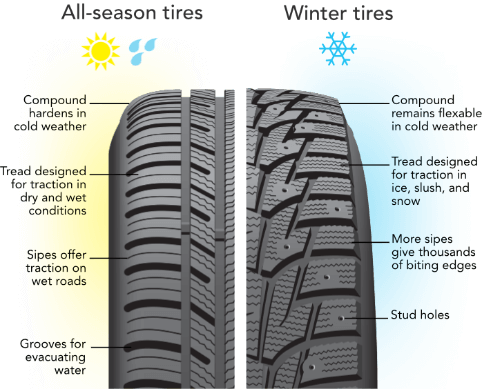
Proper storage of tires looks like this: tires without rims are stored on a rack or a special wooden stand; once every two weeks they must be rotated by 90 degrees (quarter of a turn) for protection against deformation. Long-term storage of tires in a stack or hanging is unacceptable. Complete wheels, on the contrary, cannot be stored standing up - only in a stack or suspended. When stored in a stack, tires should be repositioned once a month.
Tires must be kept clean, a special tire preservative may be used. Tires should be stored in a cool, dry place at temperatures between 0 and 15 degrees Celsius. Exposure to direct sunlight and moisture is excluded, placement of tires near heating radiators. To achieve optimal conditions and therefore maximum tire life, you can take advantage of the seasonal tire storage service offered at Vianor centres. By the way, here you will find not only tires, but also everything you need to operate a car in the winter.
Assortment of goods in the center Vianor
Change winter tires correctly with Vianor, and your winter driving will be stable and safe!
Photos taken in the tire center in Moscow, Varshavskoye shosse, 150
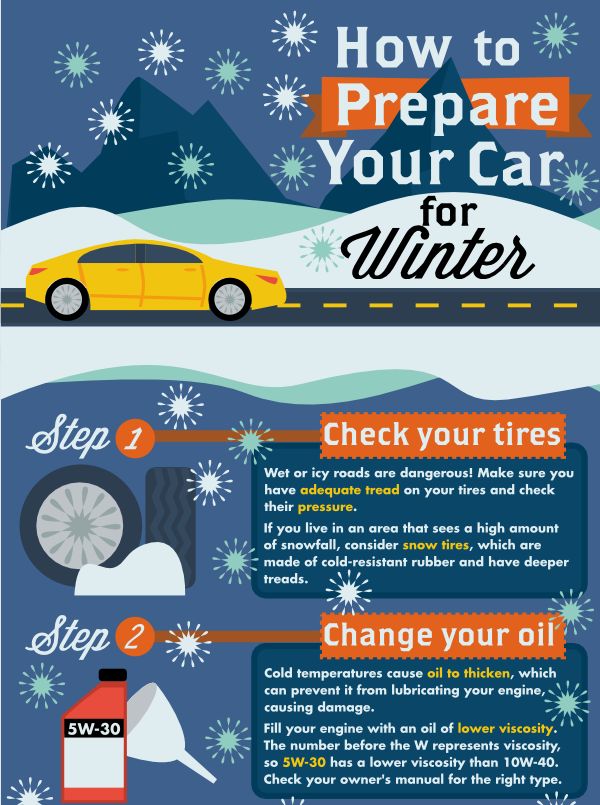
Typical prejudices of motorists are connected once again with the replacement of summer tires with winter ones. This replacement of summer tires is perceived by many motorists as a rule with irritation, since it is directly related to additional cash costs and not only.
For example, most of us with the onset of the winter snowy season will be forced to remove our newfangled alloy wheels that are not suitable for winter road conditions and change them to other wheels with winter tires. And as a rule, this is usually done by many at the wrong time. So, according to the results of the studies, it was found that in our country one third of drivers change summer tires to winter tires very late and even more late, or even worse, still continue to drive on summer tires.
Late replacement of seasonal tires is often postponed to the last minute, which results in many drivers standing idle in long queues at the tire shop. But there is a certain part of such drivers who do not change tires on time due to prejudice and incorrect knowledge about the rubber itself, which they have based on erroneous myths and rumors.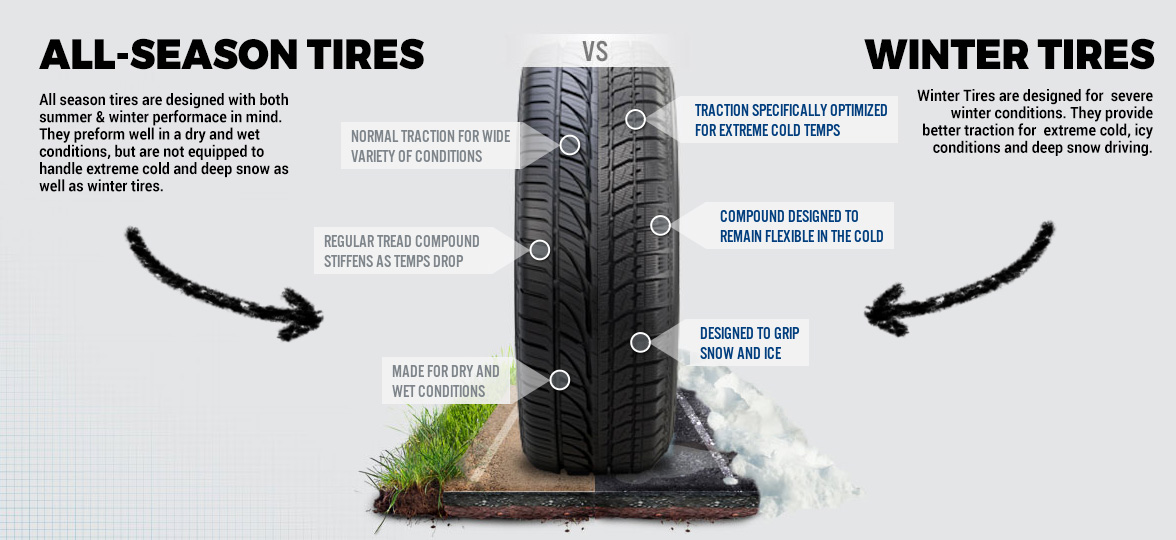 Dear readers, today we invite you to familiarize yourself with our review of "The Most Common Myths About Winter Tires".
Dear readers, today we invite you to familiarize yourself with our review of "The Most Common Myths About Winter Tires".
Thus, the company "Goodyear" conducted a survey of a decent number of motorists, thereby deciding for themselves to find out why some of them (drivers) change tires at the wrong time or even continue to operate their cars in the winter on summer tires. As a result of the survey, it turned out that 1 person out of 3 (three) respondents believes that winter tires are needed only in those areas of the country where there is a lot of precipitation in the form of snow.
Unfortunately, this is one of the most common myths about winter tires among motorists. Know and remember friends, winter tires are necessary not only for snowfalls. The most dangerous thing in winter is not snow, but the formation of black ice on the road, which is formed as a result of high humidity, which, having settled on the road, turns into ice. Also in winter, in sunny clear weather, the ice on the road begins to melt, but by sunset it freezes in a new way, which creates a threat to literally all cars.
Also in winter, in sunny clear weather, the ice on the road begins to melt, but by sunset it freezes in a new way, which creates a threat to literally all cars.
Therefore, remember, even if the winter was not snowy, then with the advent of negative temperatures you need to change summer tires to winter tires in time. Also note that winter tires do not become too hard in sub-zero temperatures, unlike summer tires, and winter tires have better grip.
80% of respondents (motorists) believe that winter tires increase fuel consumption on the car. But these friends are the same typical misconception not based on scientific data. According to the results of studies carried out by various automotive experts and authoritative automotive publications, it has been found that winter tires do not in any way affect the fuel consumption of a car.
But then many of us immediately have a question - "why then does fuel consumption increase in the winter season?" And the point here is the following. With the advent of cold weather, any driver changes his driving style, which just leads to a slight increase in fuel consumption. But the most important factor in increasing such fuel consumption is the air temperature outside, as well as low atmospheric pressure and strong cold winds.
For example, at a temperature of minus -10 degrees, the engine needs to spend more resources to maintain the engine's operating temperature. Also, for a favorable climate in the car, all of us do not forget to turn on the stove, which also increases the load on the engine.
1/3 of the drivers surveyed say that winter tires make a lot of noise when driving compared to the same summer tires. In recent years, most tire manufacturers have begun to use their latest developments for their manufacture, which has allowed them to practically equalize winter tires with summer tires in terms of noise.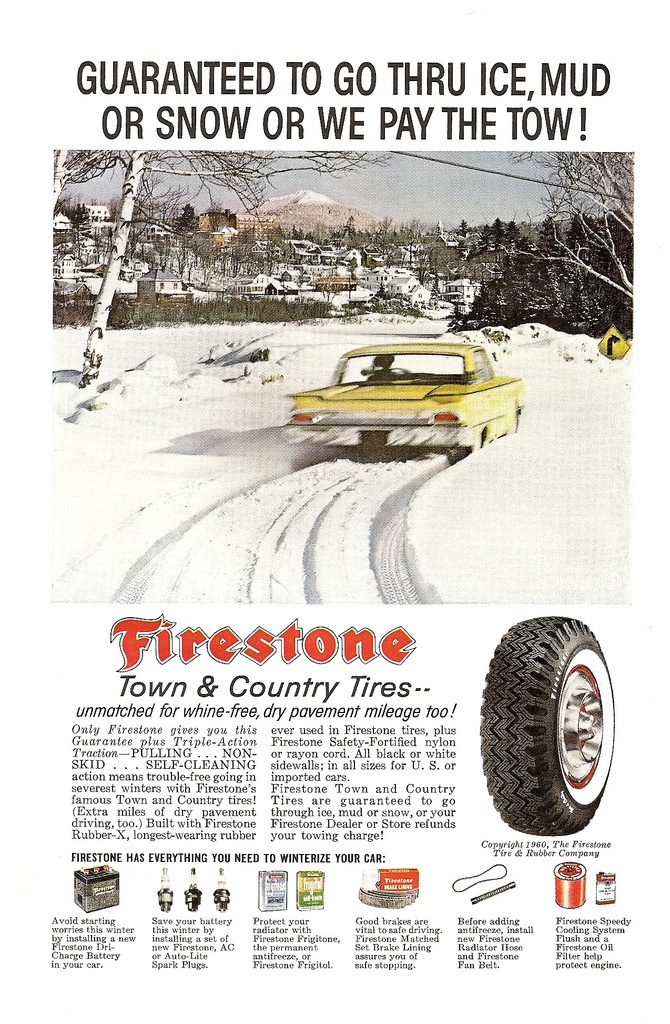 If, for example, you buy new winter tires for your car from a world-famous brand, then in terms of noise they will be identical to the same summer tires.
If, for example, you buy new winter tires for your car from a world-famous brand, then in terms of noise they will be identical to the same summer tires.
More than half of the respondents say that winter tires are much harder than summer tires. This is also an erroneous stereotype among motorists, since, despite the fact that winter tires have a completely different composition of rubber impurities, they are in no way inferior to the same summer tires in their softness. This myth has become widespread due to the fact that in reality it was found that in winter the car suspension works harder and all this is due to low temperatures, as a result of which the properties of the same oil change in shock absorbers and in various rubber suspension elements. (lost).
According to the results of the same survey of motorists, it turned out that 40% of those surveyed believe that winter tires can be used up to a tread depth of 1. 6 mm, and then it is already necessary to change it to a new one. But this, it must be admitted, is quite dangerous. So most experts believe that tires, both winter and summer, must be changed to a new one with a tread height of 4 mm.
6 mm, and then it is already necessary to change it to a new one. But this, it must be admitted, is quite dangerous. So most experts believe that tires, both winter and summer, must be changed to a new one with a tread height of 4 mm.
70% of all respondents believe that the presence of the letters M and S identifies winter tires. Unfortunately, we must admit that the presence of this designation does not guarantee drivers the purchase of just winter tires. But the fact is that the M + S marking is not a symbol protected by the laws of most countries, which ultimately does not oblige tire manufacturers to apply this designation only to winter tires. As the head of the Dunlop company personally stated, the unregulated use of the M + S symbol leads to the fact that any rubber can theoretically have this same designation.
The situation is different with the designation of winter tires in the form of a snowflake symbol.